Case study: What happened when these kunekune pigs ate rat bait
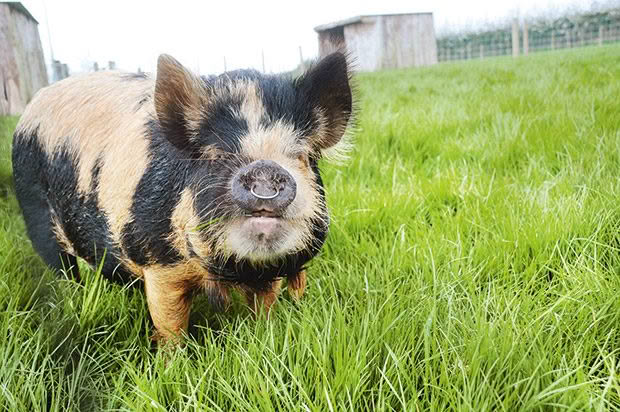
Two cute pigs are too greedy for their own good.
Words & photos: Dr Sarah Clews, BVSc
WHO
Pita & Eva, kunekune pigs
THE PROBLEM
One evening, Pita and Eva’s owner noticed an overturned rat bait station lying on the lawn. The lid was open, and the bait was gone. He found Pita loitering by the front door and assumed he was to blame.
But he was so concerned, he searched the property and found Eva tearing open another bait station and others lying empty. The two pigs had been on a rampage once they discovered the stations contained bait, eating a significant amount between them.
Rat bait is designed to be delectable, so accidental toxicity in pigs isn’t uncommon. Pigs generally have a high tolerance for it, unless they eat a significant amount of a concentrated product, as Pita and Eva had done.
THE INVESTIGATION
Rodenticides contain anticoagulants, which interfere with the body’s vitamin K production, crucial for the clotting of blood. When blood can’t clot quickly enough, it bleeds into the body, showing up as bruises, spots, and streaks just under the skin. It gets into the lungs, abdomen, gut, and the rest of the body.
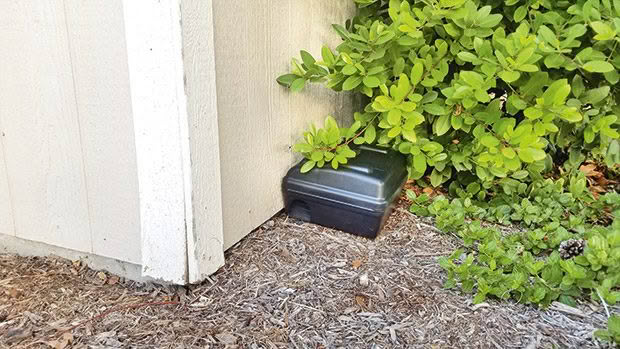
The rat bait was in proper bait stations, but they’re not designed to be pig-proof.
There are several different types of anticoagulants used in rat baits. In this case, it was a drug called brodifacoum, which is particularly long-acting, taking 4-6 weeks to leave an animal’s system if it doesn’t eat a fatal dose (or gets treatment).
THE TREATMENT
The good news was we had time to formulate a plan as it takes 3-5 days for clinical signs of poisoning to show.
Our options were:
– do a blood test to check for appropriate clotting in three days; or,
– start treatment with vitamin K immediately.
Brodifacoum lingers in the body. Once treatment starts, you need to do regular blood tests to check clotting time to measure whether it’s improving.
If Pita or Eva had been found unwell and haemorrhaging, our options would have been:
– immediate hospitalisation;
– injectable vitamin K;
– supportive care
But because their owner had found them straight away, we immediately started them on an oral vitamin K supplement. They would need to receive a daily dose (wrapped in bread) every day for at least two weeks.
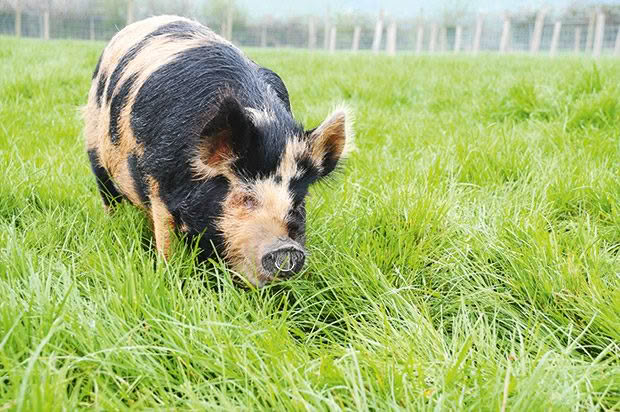
The next day, Pita managed to break into the neighbour’s paddock and ate MORE rat bait, dragging it down from its hiding spot in a tree. Three days after eating the bait, Pita became dull and lethargic. He moved slowly and wasn’t eating with his usual gusto. Thankfully, he still had enough of an appetite to eat his vitamin K sandwiches.
A chronic cough he’d had for some time before he ate the rat bait began to worsen. There was no sign of bleeding in the mouth, under the skin, or in his gastrointestinal tract at a follow-up visit, but Pita had a fever. His crackly lungs, cough, and fever indicated pneumonia, so he received antibiotics, anti-inflammatory pain relief, and dedicated nursing from his owner.
Three days after the last dose of vitamin K, I did more blood tests. Eva was fine, but Pita’s blood was still taking too long to clot. There are always differences between breeds of pig and individuals. While there is a lot of research into the average clotting values for the similar-sized potbelly pig (a common pet in in the US), there’s barely any on kunekune. To be safe, we continued with the vitamin K treatment for a further week.
THE RESULT
Pita’s final blood test clotted very quickly – so quickly, it was hard to run the test. He and Eva recovered fully and continue to cause mischief. There’s also no rat bait within their reach.
3 REASONS WHY PIGS ARE TRICKY PATIENTS
1. They’re difficult to restrain
In commercial piggeries, vets use specialist handling facilities or wire snares to restrain pigs. I use a soft rope, so restraint is as gentle and stress-free as possible. We fed Pita apples to distract him. While he was chewing, I would place a slip knot into his mouth behind the canine teeth, tighten it around his upper jaw and over the nose, then secure it to a fence.
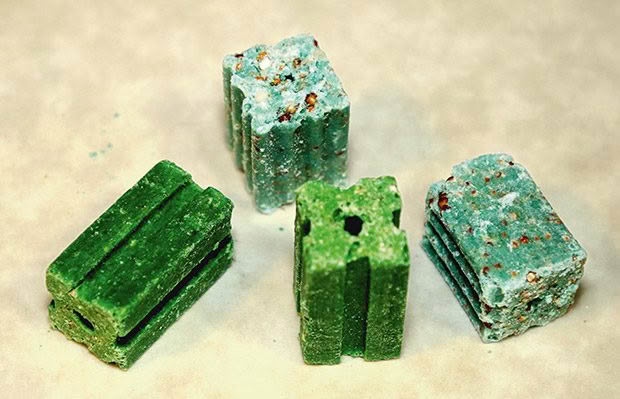
If you have pigs, consider building a pig-size crate or yard with gates at each end. Train your pigs to use it when they’re healthy, so they’ll go into it if they’re unwell.
2. It’s challenging to take blood
If a pig requires hospitalisation and critical care, it can be exceedingly difficult –sometimes impossible – to place a catheter into a vein to give emergency fluids or
draw blood.
Pigs have thick skin, so you often can’t see veins. Major blood vessels are buried deep below a thick layer of fat. In some breeds, you can pull the head up to access veins in the neck, but kunekune have very low hanging necks and (usually) dark pigmented skin, making it very difficult.
You can take blood from a tiny, hidden ear vein. I used a tourniquet at the base of Pita’s ear to raise the vein. You can only draw a small amount of blood, but luckily we needed less than 1ml for the clotting tests.
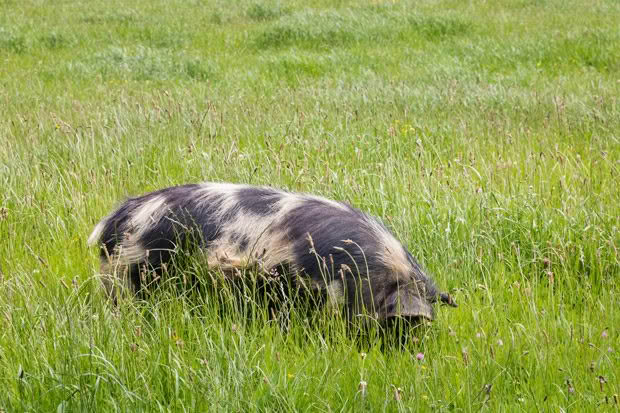
Pita was such a calm patient. He would mutter away while blood was being drawn, then go back to enthusiastically guzzling his breakfast after we removed the rope.
3. You can’t use certain treatments
In dogs, vets can feed activated charcoal to bind to the toxins. Pigs have a very fast-emptying gut, so toxins are absorbed very quickly. They also respond poorly to emetics (the drugs used to induce vomiting in dogs). Vets can also pump a dog’s stomach. However, because pigs mostly eat very fibrous food, it’s tough to remove the stomach contents as the tube that’s used gets clogged.
SIGNS YOUR PIGS HAS EATEN RAT BAIT
Clinical signs won’t show until a few days after ingestion. They include: nose bleeds; splotchy or streaky bruising under the skin; bleeding gums; coughing blood; green or blue stools (the pigment of the rat bait passes through the system unchanged).
Don’t underestimate a pig’s ability to hunt out rat bait once they know how delicious it is. It’s important to keep bait stations in areas pigs can’t access, and to check them regularly. If bait is missing, check their faeces in the following days.
MORE HERE
Love this story? Subscribe now!
 This article first appeared in NZ Lifestyle Block Magazine.
This article first appeared in NZ Lifestyle Block Magazine.
